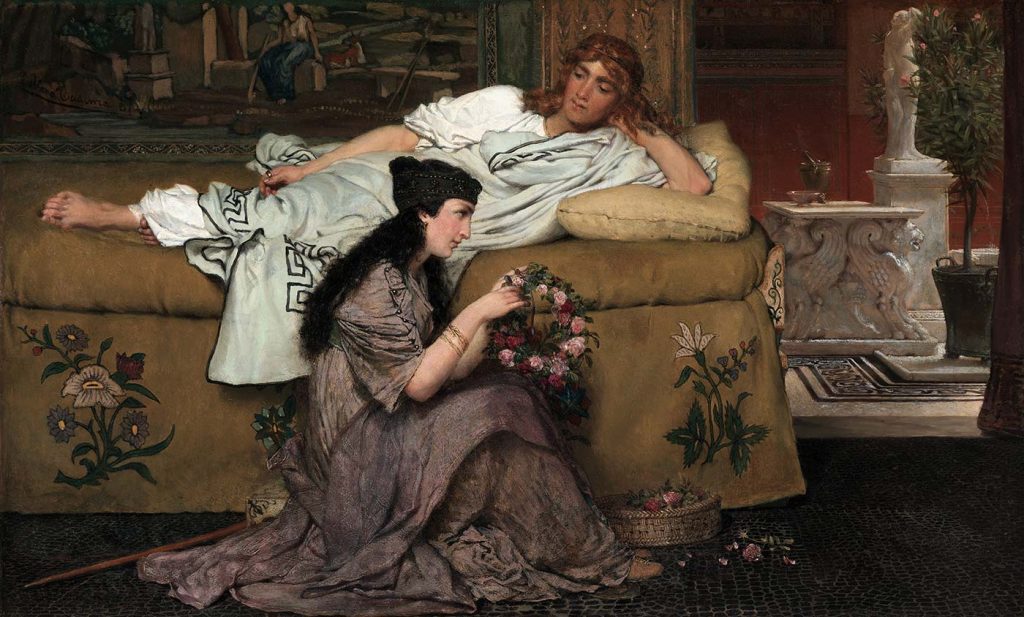
Glaucus and Nydia by Sir Lawrence Alma-Tadema was created in 1867. The painting is in Cleveland Museum of Art Ohio. The size of the work is 39 x 64,3 cm and is made of oil on wood panel.
“It was one of the few moments in her brief and troubled life that it was sweet to treasure.” Weaving a rose garland as a present for her beloved master Glaucus, the blind servant Nydia resists speaking of her love for him. The scene is based on Sir Edward Bulwer-Lytton’s enormously popular historical novel The Last Days of Pompeii (published in 1835), a melodramatic epic set in ancient Roman times, which culminates with the eruption of Mount Vesuvius.
Responding to the 19th-century appetite for things antique, the artist filled his historical scenes with depictions of Roman frescoes and statuary. Dutch by birth, Alma-Tadema made this picture in Brussels for a London art dealer. But the demand for such paintings became so great that he moved to England, where he achieved great financial and social success. Discover more in Cleveland Museum of Art Ohio…
The Artist: Sir Lawrence Alma-Tadema (1836 – 1912) was a Dutch painter of special British denizenship. Born in Dronrijp, the Netherlands. He trained at the Royal Academy of Antwerp, Belgium. He settled in England in 1870 and spent the rest of his life there. A classical-subject painter, he became famous for his depictions of the luxury and decadence of the Roman Empire, with languorous figures set in fabulous marbled interiors or against a backdrop of dazzling blue Mediterranean Sea and sky.
Though admired during his lifetime for his draftsmanship and depictions of Classical antiquity. His works fell into disrepute after his death, and only since the 1960s has it been re-evaluated for its importance within nineteenth-century British art… Read more
